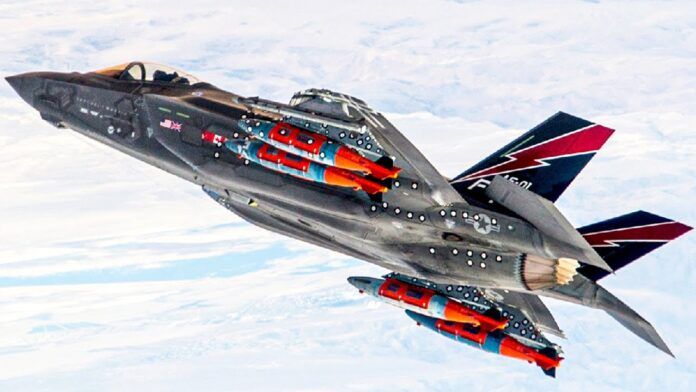Certification of B61-12 bombs on F-35 marks milestone in military capabilities
The F-35 Lightning II has achieved a historic milestone by becoming the world’s first stealth fighter jet certified to carry nuclear weapons. The certification of the B61-12 nuclear bombs on the F-35 signifies a significant advancement in military technology and strategic capabilities. This development underscores the evolving role of the F-35 as a dual-capable fighter, capable of executing both conventional and nuclear strike missions. Here’s an in-depth exploration of this groundbreaking achievement and its implications.
The American F-35 Lightning II has attained a groundbreaking distinction by becoming the first stealth fighter jet to be certified for carrying nuclear weapons. This milestone was achieved with the certification of the B61-12 nuclear bombs on the F-35, marking a significant leap in military capabilities and strategic readiness.
Traditionally deployed on F-15E and F-16 jets, the B61 bombs are now being integrated onto the F-35 stealth fighters, enhancing their survivability and effectiveness in both conventional and nuclear strike missions. The operational deployment of B61-12 bombs on F-35s follows the successful flight trials conducted by the US Air Force, culminating in the certification process being completed ahead of schedule.
The upgrade process involved equipping the F-35 with the necessary wiring and data links to accommodate the advanced B61-12 nuclear bombs. While the certification initially applies to the F-35A variant operated by the US Air Force, plans are underway to extend this capability to all F-35As in service, ensuring uniformity across the fleet.
Unlike its predecessor, the F-22 Raptor, which was primarily designed for air-to-air combat, the F-35 is a multirole stealth fighter with versatile ground strike capabilities. With the addition of nuclear strike capability, the F-35 has emerged as a dual-capable fighter, capable of executing a wide range of missions with precision and effectiveness.
The B61-12 bomb represents the latest advancement in the B61 thermonuclear gravity bomb family, aimed at modernizing the US nuclear arsenal. Featuring variable blast yield options ranging from 0.3 kilotons to 50 kilotons, the B61-12 offers enhanced flexibility in mission planning and execution.
Equipped with advanced guidance systems, including a manoeuvrable tail kit and GPS-aided Inertial Navigation System (INS), the B61-12 bomb can function as a precision-guided glide bomb with an estimated range of 15 miles (24 km). This standoff capability enables the F-35 to deliver nuclear payloads from a safe distance, minimizing exposure to enemy defences.
The integration of nuclear weapons onto the F-35 enhances its role as a credible nuclear deterrent, bolstering US strategic capabilities in an increasingly complex global security landscape. Moreover, there is speculation that European F-35s operated by NATO allies may also be equipped with B61-12 bombs, further extending the reach of US nuclear capabilities.
In conclusion, the deployment of nuclear weapons on the F-35 represents a significant milestone in military aviation and strategic deterrence. As the F-35 continues to evolve as a pivotal asset in modern warfare, its enhanced capabilities ensure its relevance in shaping the future of aerial combat and national security.
